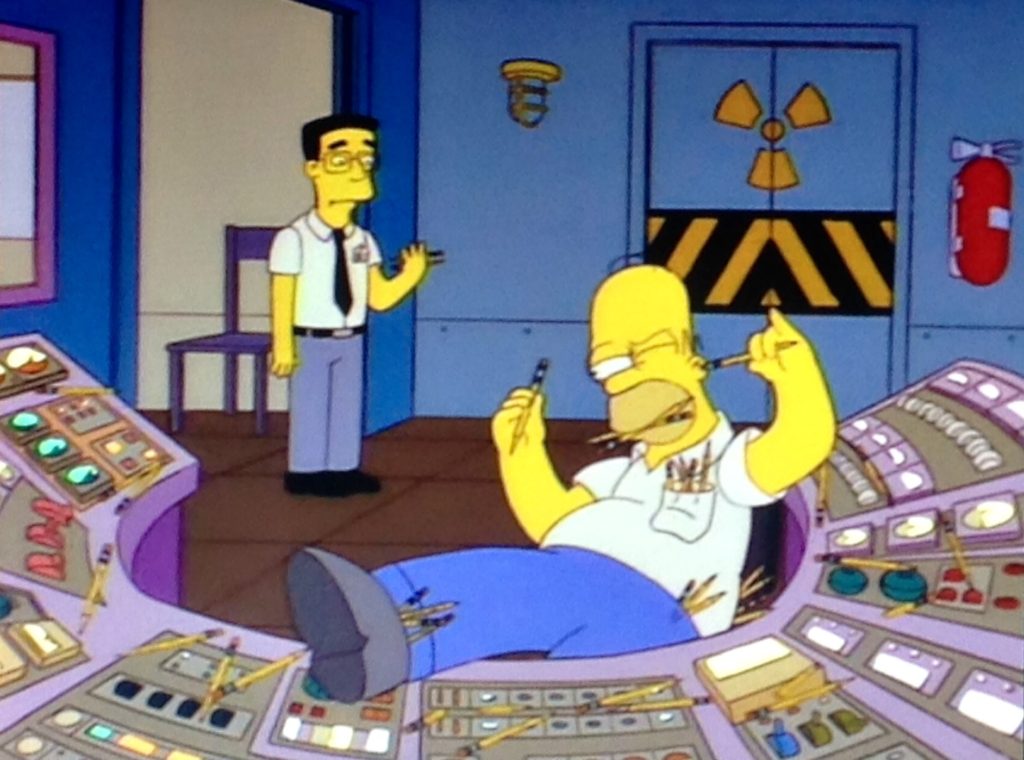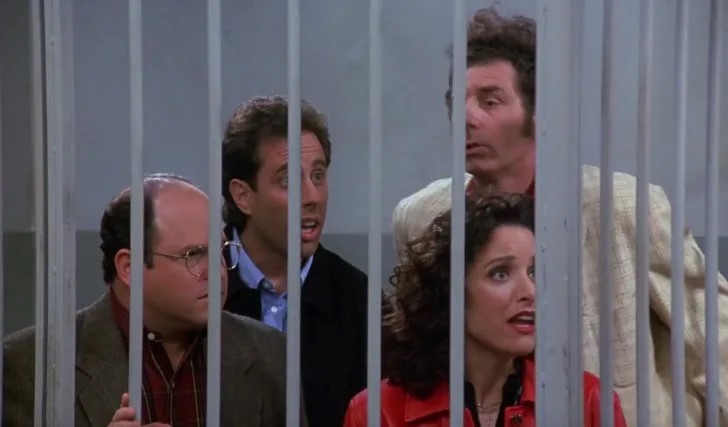
How two shows in May of 1998 gave birth to the comedic anti-hero
By Craig Allan, Contributor
On September 25, It’s Always Sunny in Philadelphia (IASP) will premiere its 14th season. A comedy that has consistently delivered, IASP is a unique show due to the characters. Unlike other comedies like Modern Family or Last Man Standing, IASP relishes in the poor nature of its characters, often showcasing them as terrible and flawed people to amazing comedic effect. While basing an entire show around unlikable characters is a novel concept, IASP is in no way the first show to highlight the unsavoury parts of their characters. Their inspiration can be seen in two 1990s shows that remain popular to this day and have changed the course of television; the pair gave birth to the idea that IASP would run with for its entire series. Those shows would be The Simpsons and Seinfeld, and those episodes would be, “Homer’s Enemy” and “The Finale.” In these episodes, both classics established the comedic anti-hero.
The Simpsons came first in 1997 with “Homer’s Enemy.” In this episode, the show is introduced to a new character named Frank Grimes. Grimes had to struggle through a tough working life to make ends meet. After seeing a report on him, Springfield Nuclear Power Plant owner Mr. Burns hires Grimes and places him in Sector 7G, the same section as Homer Simpson. For eight seasons, Homer has been the star and beloved patriarch of the Simpsons family, but in a world where a person like Grimes has not come to love Homer’s buffoonery, Homer is a loud, annoying, slob of a man who has managed to succeed despite idiocy. Angered that Homer receives praise and keeps getting him in trouble, Grimes wants to ruin Homer. He plants an ad for a nuclear power plant design contest on Homer’s desk, carefully omitting the text showing that it is a contest for children. When Homer wins the contest despite the age of the other contestants, Grimes loses his mind and does a crazy over-the-top impression of Homer: He grabs some wires on a wall that indicate “extremely high voltage” saying that because he is Homer Simpson he does not need safety gloves. The electrocution kills him. At Grimes’ funeral, Homer, is sleeping and blurts out “Change the channel, Marge!” Everyone laughs at the antics of Homer as Grimes coffin lowers into the ground.

The Seinfeld episode, which aired a year later, was monumental as it was the last episode of the series. In “The Finale,” the gang of Jerry Seinfeld, George Costanza (Jason Alexander), Elaine Benes (Julia Louis-Dreyfus), and Cosmo Kramer (Michael Richards) were put on trial for obstructing the Good Samaritan law by not helping someone in need when it was reasonable to do so. For the trial, characters from the shows past were brought in to vilify the characters, accusing them of stealing a marble rye (Jerry in “The Rye”), popping the bubble boy’s (John Hayman) bubble over a Trivial Pursuit misprint (Moops!) (George in “The Bubble Boy”), trying to kill them (Elaine to her boss Mr. Pitt (Ian Abercrombie) in “The Diplomat’s Club”), and holding a contest to see who can go the longest without “gratifying themselves” (all of them in “The Contest”). By the end the evidence was too much, and Judge Arthur “Art” Vandelay (Stanley Anderson) sentenced them to a year in jail. The show ends with all the characters in jail vowing that they will be back.
Both of these episodes were maligned a fair bit after their airings, but the pair have achieved better reputations as time has gone on. People started to realize how meta the commentary on these characters was. In real life, most people would hate an oaf like Homer, or a selfish group like Seinfeld’s gang, but as television product these character traits are ones to cherish. We may not want to be friends with Homer, Jerry, George, Elaine, Kramer, or any of the IASP gang, but for television they are the familiar friends that we are perfectly fine with watching.


